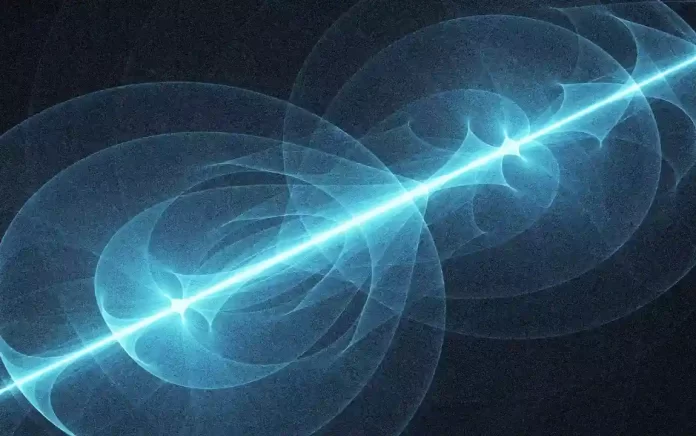Since the 17th century, when Isaac Newton and Christiaan Huygens first debated the nature of light, scientists have been puzzling over whether light is best viewed as a wave or a particle—or perhaps, at the quantum level, even both at once. Now, researchers at Stevens Institute of Technology have revealed a new connection between the two perspectives, using a 350-year-old mechanical theorem—ordinarily used to describe the movement of large, physical objects like pendulums and planets—to explain some of the most complex behaviors of light waves.
The work, led by Xiaofeng Qian, assistant professor of physics at Stevens and reported in the August 17 online issue of Physical Review Research, also proves for the first time that a light wave’s degree of non-quantum entanglement exists in a direct and complementary relationship with its degree of polarization. As one rises, the other falls, enabling the level of entanglement to be inferred directly from the level of polarization, and vice versa. This means that hard-to-measure optical properties such as amplitudes, phases and correlations—perhaps even these of quantum wave systems—can be deduced from something a lot easier to measure: light intensity.
“We’ve known for over a century that light sometimes behaves like a wave, and sometimes like a particle, but reconciling those two frameworks has proven extremely difficult,” said Qian “Our work doesn’t solve that problem—but it does show that there are profound connections between wave and particle concepts not just at the quantum level, but at the level of classical light-waves and point-mass systems.”
Qian’s team used a mechanical theorem, originally developed by Huygens in a 1673 book on pendulums, that explains how the energy required to rotate an object varies depending on the object’s mass and the axis around which it turns. “This is a well-established mechanical theorem that explains the workings of physical systems like clocks or prosthetic limbs,” Qian explained. “But we were able to show that it can offer new insights into how light works, too.”
This 350-year-old theorem describes relationships between masses and their rotational momentum, so how could it be applied to light where there is no mass to measure? Qian’s team interpreted the intensity of a light as the equivalent of a physical object’s mass, then mapped those measurements onto a coordinate system that could be interpreted using Huygens’ mechanical theorem. “Essentially, we found a way to translate an optical system so we could visualize it as a mechanical system, then describe it using well-established physical equations,” explained Qian.
Once the team visualized a light wave as part of a mechanical system, new connections between the wave’s properties immediately became apparent—including the fact that entanglement and polarization stood in a clear relationship with one another.
“This was something that hadn’t been shown before, but that becomes very clear once you map light’s properties onto a mechanical system,” said Qian. “What was once abstract becomes concrete: using mechanical equations, you can literally measure the distance between ‘center of mass’ and other mechanical points to show how different properties of light relate to one another.”
Clarifying these relationships could have important practical implications, allowing subtle and hard-to-measure properties of optical systems—or even quantum systems—to be deduced from simpler and more robust measurements of light intensity, Qian explained. More speculatively, the team’s findings suggest the possibility of using mechanical systems to simulate and better-understand the strange and complex behaviors of quantum wave systems.
“That still lies ahead of us, but with this first study we’ve shown clearly that by applying mechanical concepts, it’s possible to understand optical systems in an entirely new way,” Qian said. “Ultimately, this research is helping to simplify the way we understand the world, by allowing us to recognize the intrinsic underlying connections between apparently unrelated physical laws.”
Reference:
Xiao-Feng Qian et al, Bridging coherence optics and classical mechanics: A generic light polarization-entanglement complementary relation, Physical Review Research (2023). DOI: 10.1103/PhysRevResearch.5.033110

Light is only a particle. The proof (argument) is in “The Interference of Light et al” on my website.